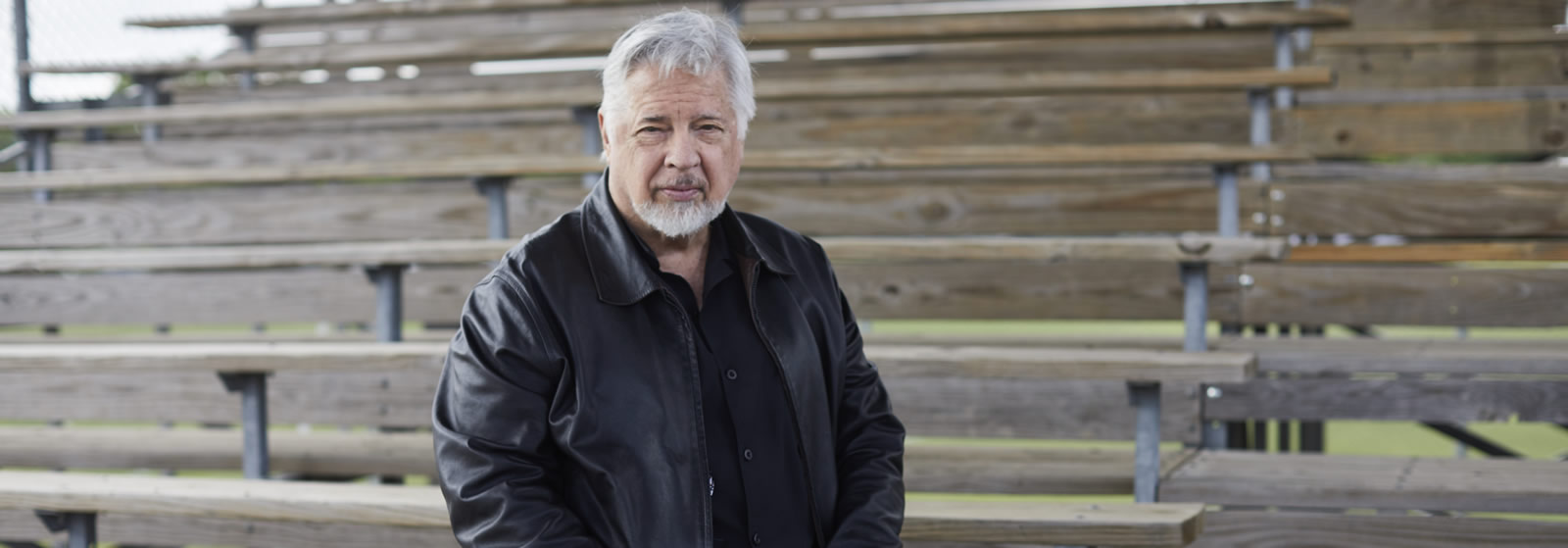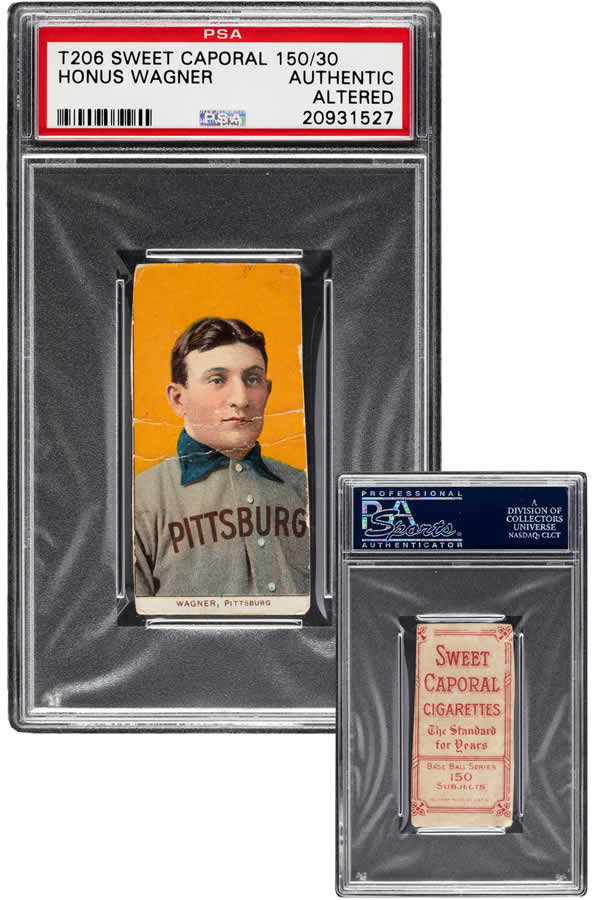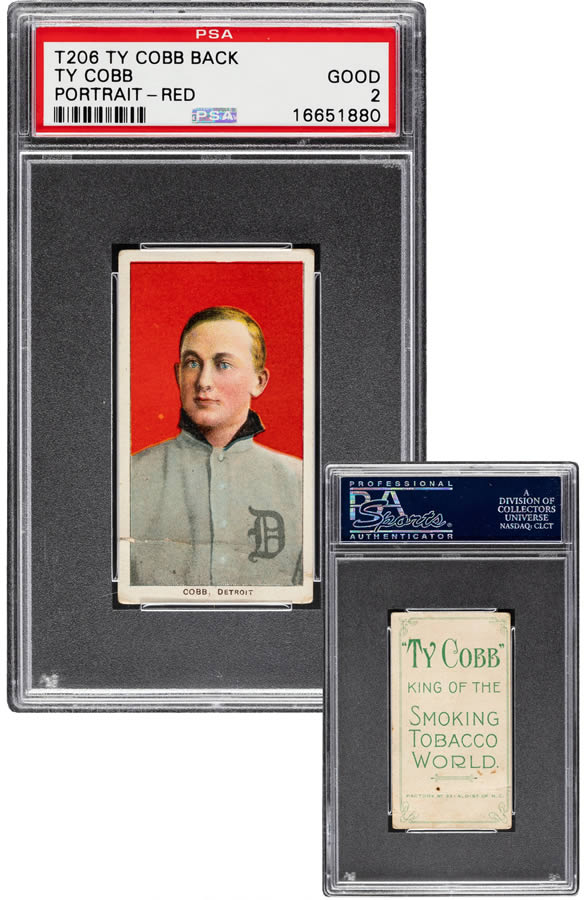FOUNDER, PROFESSIONAL COIN GRADING SERVICE/RARE COIN DEALER
Interview by Hector Cantú
David Hall began collecting the legendary T206 card set 10 years ago, tracking down not only each of the more than 500 subjects in the famous tobacco issue – among them Ty Cobb, Walter Johnson, Christy Mathewson and Honus Wagner – but each of the different backs. Acquiring more than 5,000 player/back combinations of the 5,257 known, his collection ranks as one of the hobby’s top achievements. Hall is auctioning the collection this year at Heritage Auctions.
EVENT
►THE DAVID HALL T206 COLLECTION SPORTS COLLECTIBLES CATALOG AUCTION 50018
Sept. 19, 2019
Online: HA.com/50018a
►THE DAVID HALL T206 COLLECTION SPORTS COLLECTIBLES CATALOG AUCTION 50021
Dec. 12, 2019
Online: HA.com/50021a
INQUIRIES
Chris Ivy
214.409.1319
CIvy@HA.com
►VIDEO REPORT
David Hall talks about his T206 collection. See interview at HA.com/DavidHallT206
You founded Professional Coin Grading Service in 1986. How did you get into baseball cards?
The whole vintage-card market kind of started in the late ’70s, and I noticed in the early ’80s there were card dealers coming to the coin shows selling us coin dealers baseball cards. And so they had their notebooks full of cards. “Oh, wow, a ’54 Topps Yogi Berra, $5. I’ll take that. Uh, a Whitey Ford for $5? Okay. What about Willie Mays and Hank Aaron?” “No, they’re more. They’re $10!” And so that was sort of the beginning of it and then it exploded in the ’80s. And then grading, of course, became an issue and we were so successful with grading coins that we figured it would work for cards.
Professional Sports Authenticator started in 1991…
It kind of took off when Mark McGwire and Sammy Sosa did the home-run derby thing. We used to get one or two Mark McGuire rookie cards a month. Then when it took off, one guy submitted 1,500 at one time. So that was a boost to graded cards and then slowly but surely, people understood the benefit and once the buyers insisted on it, the dealers had no choice.
What about when you personally began collecting baseball cards?
I collected as a child. When I was a teenager, I was more interested in girls so I didn’t collect baseball cards. I came back to it when I started seeing these cards at the [coin] shows. I [had] a large card collection that I sold in 1998 and it was the classic era, 1948 to 1957. I had football, baseball, basketball. I sold that in 1998, including my Mickey Mantle [graded] 10 … ’52 Topps, which brought $120,000 at the time. I bought it in 1993 for $50,000. It’s worth a little more than that now!
How do you deal with prices going up so fast? You sell a card and a few years later, it’s selling for a lot more.
Besides being a collector of many, many things, I’m also a collectibles dealer, so I understand how to buy and sell. My wife wants me to keep some Ty Cobb cards, but I keep explaining to her, “Been there, done that.” If you’re going to keep anything, yeah, keep the Ty Cobbs! But when it’s time to sell, it’s time to sell. Do I wish I had my ’52 Topps Mickey Mantle in 10? Yeah, sure. But I don’t and I bought other things, so it all comes out in the wash.
When did you begin focusing on the T206 set, the tobacco cards?
The T206 set is one of the biggies, along with the ’33 Goudey and ’52 Topps baseball [sets]. The T206 set has four of the first five inductees into the Hall of Fame … Mathewson, Wagner, Johnson, Cobb. This whole back thing fascinated me as a collectibles expert because I think if you’re going to be successful in collectibles, there are two concepts I’ve seen with successful collectors. One is intense specialization. If you want to be a successful collector, specialize intensely. For coins, that would be like [Ted] Naftzger with early large cents, Harry Bass with gold coins. They were wide and collected varieties. You don’t have to do that. You can focus on one set, like [Steven] Duckor’s Barber halves, which Heritage sold. For decades he did Barber halves and built the best set ever, with intense specialization, intense focus.
The other concept is the forever concept. There are iconic items in all collectible fields. If you collect records, it’s called Elvis Presley and the Beatles, or Robert Johnson in 78s. In sports, it’s Babe Ruth, Ty Cobb, Mickey Mantle, Willie Mays, Hank Aaron. There are iconic items, what I call forever items. And so with the T206 set, when you get into the backs, that gives you this intense specialization. And when you talk about forever, you’re talking about Cobb, Mathewson, Wagner, Walter Johnson, and others. The set has plenty of Hall of Famers and all-time greats. So that set gives you everything.
What was an early, important acquisition?
When I started in 2009, an auction company now no longer in business had what they called the St. Louis Find of Drum Backs, Drum being one of the rarest of all T206 backs. And they had 32 cards. Of the 32, 12 were unique, the only known card. And so I looked at it and I thought it was really cool and I bought all 32 lots. I just bought one after another. Everyone must have thought I was crazy. So then I thought, “You know, these T206 rare backs. That’s kind of an interesting concept. And I have 32 Drums. I guess I’ll start a back set.” And that’s how it started it.
Where do most of your cards come from?
I would go to the National Sports Collectors Convention and go to every table. And I actually took notes on every T206 card I saw. I did a survey of over 100,000 cards, figuring out which backs were the rarest. So sports shows, dealers, auctions.
What about the danger of everyone knowing that David Hall is looking for these cards? Have you found it harder to negotiate because people know what you want?
Well, I’m a collectibles dealer, so I know all the tricks and I say no. I don’t always just say yes. I’m semi-price conscious, but I have an obsessive focus. … I would go to the National and if I saw one or two cards, I would think I was in heaven. Not necessarily a rarity, like a Cobb or a Walter Johnson or Christy Mathewson, but just a common non-star player Broadleaf 460. And when I was buying them, they were $5,000, $10,000 each, I would just buy them. There was no difference to me between $7,000 and $8,000. Now, because I’m David Hall, they probably quoted me $8,000, but I didn’t care. Some would quote $20,000 or $25,000 and I just say, “No, not for me.”
So you didn’t care if people knew you were collecting this specific category?
One of the reasons I was able to [acquire] over 5,000 different backs – and I’ve been told that nobody’s ever had 3,000 other than me – is that I told everybody. And so when the dealers got a rare back, they’d offer it to me and, God bless America, there was no difference to me between $7,000 and $8,000. They would offer me a Broadleaf 460, a Red Hindu, something like that. Finding the card is an accomplishment, so I’m not going to quibble over 10 percent.
Why are you auctioning this collection now?
I’ve had many collections. I had one of the finest known sets of $10 Libertys ever … and I sold it when I was done. Now, I’m not done with this collection. It’s not clear that anybody ever could complete all of the backs of a T206. But I’ve focused on it for over 10 years and it’s gotten to the point where it’s harder to buy things. And, you know, I’m 72 years old. So I’ll do something else.
Why did you choose Heritage Auctions to sell your collection?
First and foremost, Heritage gets great results. They do a great job and get great results … 100 percent, Heritage has the best website in the collectibles business. Secondly, I’m kind of proud of my collection, so I know that Heritage will present it in a wonderful way.
This article appears in the Fall 2019 edition of The Intelligent Collector magazine. Click here to subscribe to the print edition.




